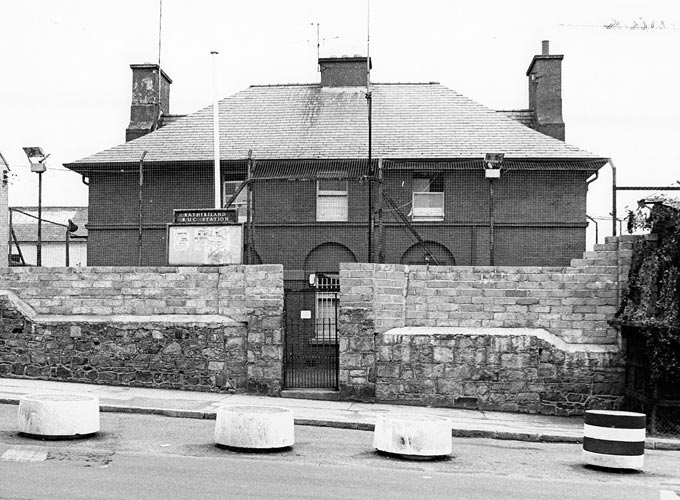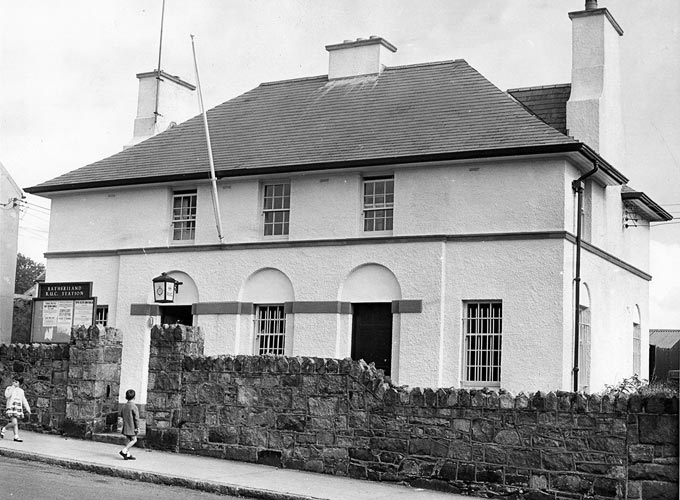Description
Photographs of Rathfriland Royal Ulster Constabulary (RUC) station in the 1960s and with fortifications in 1970s. By 1969, there were less than 60 men in the Irish Republican Army (IRA) in Belfast. The organisation had moved away from violence and was following a political Marxist agenda. Arms training had been stopped and by May, the total IRA Belfast arsenal was a machine gun, a pistol and some ammunition. In December, a coup caused a split in the movement. The breakaway group was called the Provisional IRA. They quickly established themselves in Catholic housing estates in Belfast and secured money from the Republic of Ireland and America to buy guns and explosives. Violent confrontations with the British army and the imposition of a curfew rapidly increased support and recruitment to the new militant PIRA.
The PIRA bombing campaign began on 31 January 1970 with an attack on Brown Square RUC station in Belfast. After further petrol bomb and bomb attacks, automatic weapons were distributed to barracks and buildings were fortified to deal with the escalation of the PIRA threat. RUC stations were painted grey and windows were blocked up or covered with steel shutters. Outside, search lights were installed, walls were built up with breeze blocks, additional wire fencing erected and concrete bollards were installed in front of stations to prevent car bomb attacks.
Links
- Related objects > RUC type 'A' barracks
- Related objects > Mortar from attack on Newry RUC station
- Related objects > Photograph of Musgrave Street PSNI Station
- Flickr: Mountpottinger RUC Barracks 1973
- Source.ie: Barracks by Jonathan Olley
- Jonathan Olley: Castles of Ulster
- CAIN - PRONI documents: Internal security - role of the police



